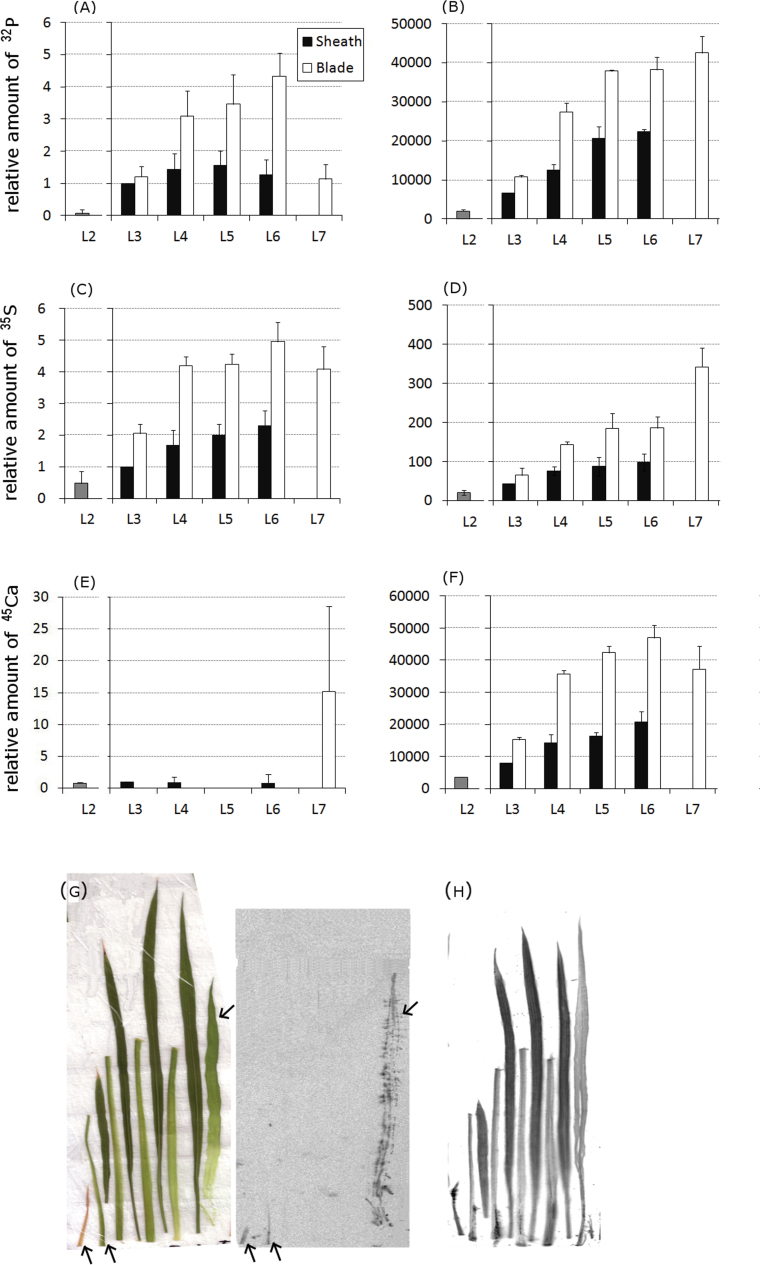Fig. 1.
Distribution patterns of 32P, 35S, and 45Ca in each organ 15min and 48h after the initiation of treatment. (A–F) 32P (A, B), 35S (C, D), and 45Ca (E, F) signals were analysed with an imaging plate (IP) at 15min (A, C, E) and 48h (B, D, F) after the initiation of treatment. The signal intensity for each organ was based on the photostimulated luminescence value, which was normalized to the value for the L3 sheath of each plant, and was quantified considering the amount of each radionuclide in the L3 sheath at 15min as a standard. Error bars correspond to standard deviation from three biological repeats. (G, H) Distribution pattern of 45Ca in each organ at 15min (G) and 48h (H) are shown in representative IP images. The leaf samples in (G) are shown in order from L2 (far left) to L7 (far right). L3, L4, L5, and L6 were separated into the corresponding sheath and blade (left and right, respectively, in each pair of organs). The photograph of the analysed plant tissues (G, left) shows the positions of the samples in the detected 45Ca image (G, right). Arrows are appended to assist the recognition of 45Ca signals. The leaf samples in (H) were positioned as in (G), except that an L8 image could be detected and is shown at the far right. Experiments were performed at least twice, providing similar results (this figure is available in colour at JXB online).

